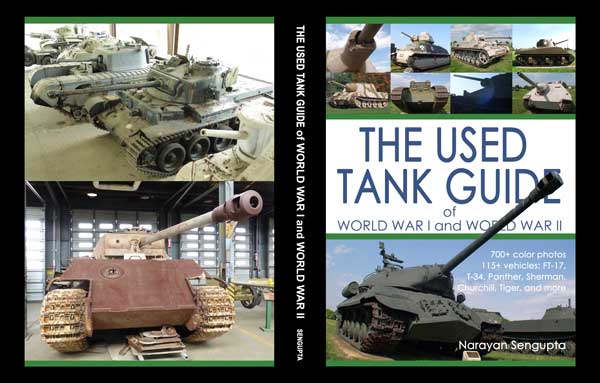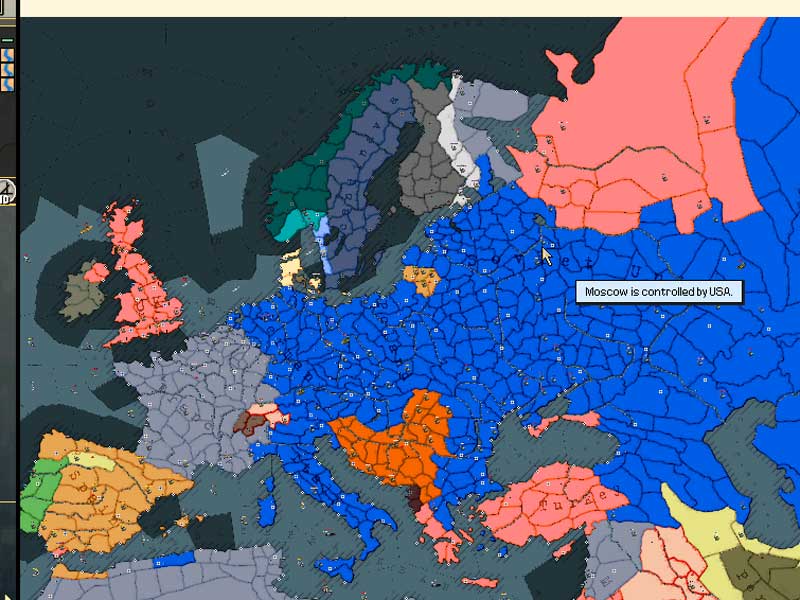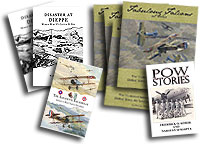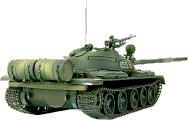PGIII Strategy Guide
by Philip Nelson
1: JagdTactics: How to finish off crippled enemy airplanes
In this article we will have a look at possible solutions to a common problem: that of not being able to fully destroy enemy air units in one turn, and consequently seeing them escape to be refitted.
That situation can arise in several different fashions, and all are frustrating. It most often occurs when trying to bring down an enemy fighter. Using multiple planes of your own, you've knocked the enemy airplane down to a few strength points, but can't finish it off. The AI then flys it off into the sunset, leaving your battered airplanes behind. And once both sides refit, the battle for air supremacy begins again.
However, there is a way to complete the battle in the next turn. The AI will always attempt to refit a smoking air unit as long as it owns at least one aerodrome. Carefully watch the direction its damaged airplanes take, and then check the strat map for the closest airfield in that direction. The AI will most likely have flown its wounded planes there to be refitted. Now, fly a fighter to the nearest hex adjacent to that airport's zone of influence. Just make certain you do not fly the fighter into the airport's zone of influence, because your airplane might be ambushed. If the AI planes had enough movement capability, they will almost assuredly be in a hex next to your fighter, and will be prime targets.
Not only that, but because the AI usually attempts to refit its airforce at the closest airfield, you can sometimes trap the damaged planes at an airfield you are about to capture. Simply let the AI hold it one more turn, and then the crippled enemy airplanes waiting there can easily be dispatched. If, for some reason, you are unable to kill them, capture the airfield; and those airplanes will try to fly to the next airport, giving you another chance at them.
Note that your fighters can attack successfully even if they are damaged, though of course fighters with only a few strength points left should probably not be used. Also be careful to not leave them in regions covered by enemy AA assets.
2: Notes on Air-Defense Units in PG3-SE
In this article we will have a look at ways to take advantage of the strengths of the air defense class, exploit its weaknesses, and minimize those weaknesses.
There are four main factors involved in choosing an air defense unit: cross-country maneuverability, strength points, air-attack numbers, and range. Cross-country maneuverability is important only if you need to provide ground-based air-defense for an all-terrain task force. Otherwise, any normal towed AD unit will do, as they are just as fast as towed artillery- the backbone of a strong battle-group. Strength points are very important, as a rare, though good, AD unit will have a hard time staving off a direct air attack and will probably not provide enough protection for ground units. Excellent air-attack numbers and range can out-weigh that, however. As a general rule, high strength can make up for weak air-attack numbers; and superb air-attack numbers can make up for low strength- though a lone, low-strength AD unit is almost always vulnerable to a direct air attack.
Air-defense units do have an inherent flaw, however; they do not defend against multiple attacks in a turn at full strength. Each attack by the AD unit- regardless of what it's attacking, either on offense or defense- lessens its effectiveness by 25% until a total value of 25% effectiveness is reached. (That is true for any unit, by the way.). Thus it is possible to 'soften up' an AD unit your artillery cannot reach by strafing a unit in its range with a tough fighter or bomber, or even by attacking the AD unit with a ground unit such as a recon.
Attacking the AD unit directly with airplanes in order to weaken it can be a bad idea because it usually involves taking more casualties; but attacking it with airplanes after its effectiveness has been reduced can be a risk worth taking, especially when your ground forces cannot reach it or there isn't enough artillery available. Generally speaking, low-strength self-propelled AD units are the most susceptible to air attacks, and high-strength towed AD units are the least. And even if you do not attack the AD unit directly, its effectiveness at defending against air attacks can be weakened enough for you to do quite a bit of damage bombing the enemy targets it's covering without sustaining a high number of casualties.
Exploiting the inherent weakness of AD units is something the AI does very well. If you only have one AD unit, it is almost guaranteed that it will eventually be attacked from the sky, possibly by multiple airplanes. The best way to guard against that is simply to park your own fighter over the AD unit. However, that will not stop the AI from mercilessly attacking your other ground units unless you have enough fighters to cover them all. Using multiple AD units in a task force is probably the best way to guard against debilitating attacks from the air. When that tactic is being used the AI will sometimes scout the area over the opposing forces, find it too costly to even attempt an attack, and leave. Other times it might not be able to see all of the defending AD units, and take a tremendous number of casualties.
By exploiting these factors, you should be able to protect your forces from deadly air attacks and perhaps give yourself an advantage in the war for air supremacy.
The Suppression Strategy - Part 1
In this article we will take a look at a campaign strategy involving the development of an army dedicated to maximizing the effects of long-term suppression.
But what is suppression, anyway? Suppression in PG3 essentially models morale loss. On a unit, strength points that are suppressed turn yellow; and though they are not destroyed, they will not be counted in combat for the rest of turn. Only the Rally order can remove suppression before a turn ends, and it can only be used on offense. Thus if you always attack units that are suppressed, you will rarely take damage; and that is key to the effectiveness of the suppression strategy. Sustaining damage can slow an advance significantly, limiting promotions and bonuses; and over the course of a campaign, that can have an serious impact on the quality of an army.
There are two unit classes which can normally cause long-term suppression in PG3: the artillery class and the bomber class. Both have unique characteristics that make them desirable.
Artillery can fire without fear of counterattack, and are excellent at suppressing entrenched soft targets. They rarely do significant damage, but will usually suppress anything they attack except heavy armor. Artillery comes in many forms, but the two key types are towed artillery and self-propelled artillery.
Towed pieces, such as the 15 sFh18, usually have a firing range of four hexes, allowing them to reach over heavy defensive fronts to suppress vulnerable artillery and air defense assets. However, that comes with a price: if they are needed in an advance, they must have road access; otherwise, they will be left behind. Self-propelled artillery pieces solve the problem of mobility; they can drive through open terrain easily, and thus can keep up with blitzing armor formations. But that also comes with a price: they tend to have very short firing ranges, usually two hexes; and they tend to have low ammunition loads.
It is usually best to have at least one of each per battle group; and if there is room for more, towed artillery is usually the best to use, as they are excellent at covering many units with support fire. (Note that artillery leaders with Expert Support should be preferred for towed artillery commands, as they complement each other nicely.) Your average artillery piece should have a four-star leader at least; and if it is possible to upgrade one to an eight-star leader, do so- the fourth veteran order is awesome when you need to deliver suppression in a hurry. But because that order requires two units of ammunition per attack, it is wise to pair an eight-star leader with artillery pieces that have high ammunition loads.
Bombers are highly maneuverable, and their specialty is neutralizing hard targets. As far as suppression is concerned, there are three kinds of bombers: ones that are good against hard targets, others that are good against soft targets, and those that are good against all kinds of targets. In a choice between a 'soft' bomber and a 'hard' bomber, the latter is almost always the best choice, as there is nothing else which can take on heavy armor as successfully. However, note that at least two bombers have four firing attributes(the Ju-87G and the B25H), while most only have three. That extra attack per turn can be helpful. Also, extra strength points on a bomber can be very significant; so much so that choosing a fully-strengthed bomber over a slightly superior under-strengthed bomber can be an excellent decision.
It is usually best to use at least two bombers, and to have as many with six-star leaders as possible. A ten-star leader should almost always be a long-term goal, due to the veteran orders and extra actions.
Note that as long as you have fully-equipped battlegroups, you can never have too many bombers or artillery pieces.
The Suppression Strategy - Part 2
One of the reasons already mentioned for using the suppression strategy is that one can attack suppressed units without taking casualties. There is, however, another important aspect of suppression; if a fully-suppressed unit that is not entrenched is attacked, it will retreat. Thus suppression can be used to claim territory and capture objectives.
In order to efficiently take advantage of suppression, one must, of course, use artillery and bombers. But they cannot exploit suppression on their own, and they are vulnerable units. Thus there are two main issues involved in building an army around suppression: exploitation and protection. Of course, before enemy units can be suppressed, they must be found. Recons and fighters are excellent at spotting, and perform other important functions as well.
Now, most enemy units are usually found entrenched. If they are only at level-one entrenchment, that is not much of a problem- each attack on a fully-suppressed unit will remove one level of entrenchment. However, defending infantry can be very difficult to remove in that fashion, as they are usually entrenched at level three. The best way to deal with that problem is to use infantry specialists with the engineering ability; they ignore entrenchments, and can force immediate retreats in such situations. They can also do quite a bit of damage, especially when paired with a Tactician leader; but they are not suitable for quickly destroying many units. Instead, they prepare the battlefield for their big brother, the tank.
Most tanks possess devastating firepower; are excellent against most targets in open terrain; and can overrun battered units, prolonging their effectiveness in a turn. In a suppression-based army, they will always have the most kills. However, their class special Blitz is what makes the suppression strategy so effective. Any unit a Blitz tank forces to retreat will surrender. Thus once engineers have prepared the way, a tank can essentially delete the entire defenses of an objective. Because of that, firepower is not nearly as important as speed in early scenarios. For instance, using the Pz IIF is usually better than using early medium tanks such as the Pz IIIH. The Pz IIF has a movement of six, and often has a strength of fifteen before it is phased out; thus it can quickly maneuver behind objectives, easily overrun soft targets, and force T-34's to surrender- all in the same turn. Later, of course, heavier tanks are necessary to blunt counter-attacks.
In a pinch, other units can be used to destroy enemy units; but the suppression/engineers/tanks approach is usually the best way.
Artillery and bombers need to be able to do their jobs without being seriously damaged. Enemy fighters and bombers can wreak havoc on those units, thus measures must be taken to insure that they do not. Air defense units are excellent at preventing air strikes; but they in turn must be protected from air strikes- the AI likes to attack them with bombers. Using a bomber or a fighter to patrol directly above air defense units will make that nigh-on impossible. Fighters also protect bombers from enemy fighters. The use of these measures is mostly psychological: even with multiple fighters or air defense units covering a battlegroup an enemy air-force can damage just about anything if they are willing to take heavy casualties. Usually, however, they are not.
In a typical battle-group, it is good to use one recon, one tank, one air defense unit, one engineering unit, and two artillery pieces- though one self-propelled artillery unit is usually sufficient in a cross-country battle-group. A single engineering unit or recon can be good in attacks on secondary objectives; and in sieges such as Leningrad or Kiev, doubling the numbers of the typical battle-group is probably necessary. As far as the air-force is concerned, one or two fighters will do; but using as many good bombers as possible can be a game-winner.
Note that anti-tanks are practically worthless in a suppression-based army unless there is nothing else to use.
Philip Nelson

 Home
Home Hearts of Iron
Hearts of Iron








 French Military Victories...
French Military Victories...